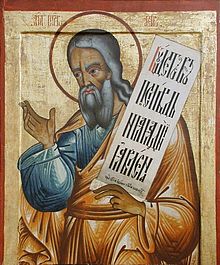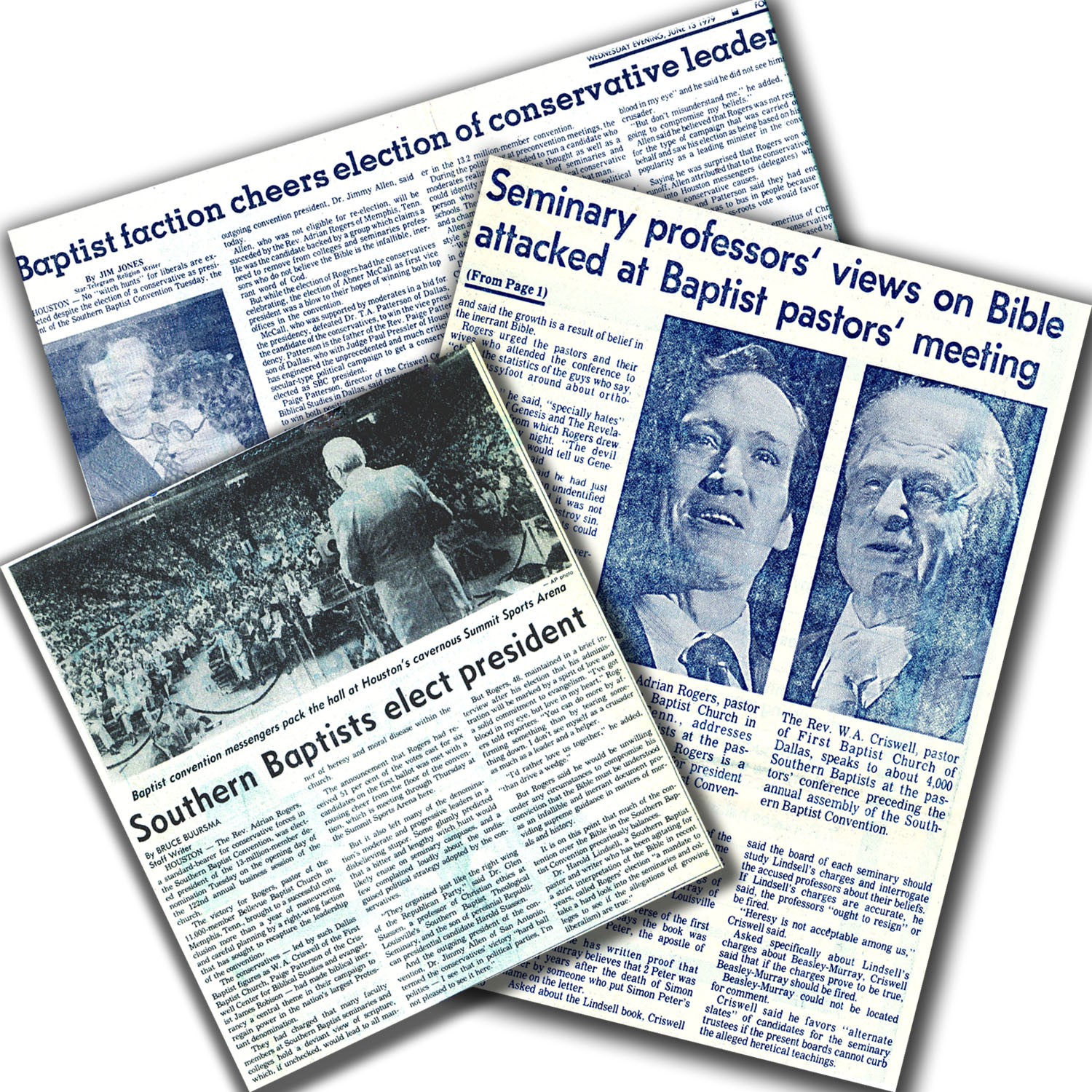Introduction
This essay will examine some sermonic themes found within a selection of two of Whitefield’s sermons. For contextual purposes, a discussion of the spiritual and moral condition of England, as well as the American Colonies, will be included. Furthermore, a brief discussion of Whitefield’s legacy, including why he has been regarded as a success throughout America as an itinerant evangelist, will occur.
Spiritual and Moral Scene of England and Its American Colonies of the Eighteenth Century
In determining the worthiness of Whitefield’s contributions in his time and in the people that he affected, Ryle offers this advice, “Do not judge what was a right course of action in other times, by what seems a right course of action in your own.”[1] Therefore, understanding the general spiritual and moral attitude, within the eighteenth century, England and America becomes an important feature in determining much of the context, locked within the themes, of Whitefield’s sermons and letters. However, being that it was the conditions within England that helped to motivate Whitefield to enter into evangelist preaching as an itinerant, it makes sense that the majority of this section reflects England.
It has been pointed out that many, of those who occupied the upper echelon of British society, behaved, generally and openly, in ways that were contrary to the “law of God”. Commenting on this same sub-group within English society, Haykin informs us that one of King George I’s (ruled: 1714-27) primary interests was chasing after women. George I, however was a married man; but, he didn’t let this stop him in his fleshly pursuits, as he divorced his wife during the thirty-fourth year of his life, in order accommodate a procession of lovers. One of George I’s prime ministers, Robert Walpole (1722-42), also a married man, maintained living quarters with a Ms. Maria Skerrett, until the death of his wife; at which time, he married her.[2] These leading men, as well as others within England, set the accepted moral tone within this country. It is, without doubt, that their lifestyle, did, indeed, influence many within lower socio-economic statuses. Commenting on the common citizenry, Haykin points out that the society within England, during this period, was widespread with immoral and unbiblical practices, such as: “homosexuality, profanity, sexual immorality, drunkenness and gluttony.”[3] Furthermore, there were those who championed a life of adultery and carousing. The abuse of children and women was, unfortunately, a not-to-uncommon issue. In fairness, though, living contrary to the “law of God” could have meant acts that, today, many within Christianity would consider light entertainment—playing cards, going to or acting in the theatre. Whitefield, himself, while still a young man in Gloucester, entertained thoughts of becoming involved in theatre. This was a time in the theatre, however, in which it was not uncommon for men to play female roles, and vice-a-versa. Kidd comments that it was the “frivolity, gender-bending casts, and profane content” that convicted Whitefield, post-conversion, to abstain from it.[4]
Due to the transformation of the English economy, via the Industrial Revolution, the population of London grew, exponentially, during this period. Housing, as well as housing prices, could not meet the demand. In order to internally escape the conditions which permeated their lives, many within England turned to strong drink. It would not have been uncommon to witness many, during this time period, within England partaking of a daily mug of beer. However, just prior to the eighteenth century, English society was introduced to a new type of alcoholic beverage: gin. During this time, the production of strong alcoholic formulations was not as precise and routine as it is today. Instead, the process was quite crude and lacked any universal procedures that would have helped to ensure a consistent product with a high degree of relative safety. Haykin points out that gin consumption was so high and widespread in London, that one area, which held, approximately, two-thousand buildings, was made-up of five-hundred-and-six “gin shops”.[5]
Ryle attaches this statement to the previous observation, “without rebuke”.[6] With these two words, he is giving us a glimpse of the spiritual condition of the established Church in England, as well as it’s ordained clergy, during this period. Ryle, however, was somewhat complimentary of many of the Anglican bishops, in terms of their intellectual contributions. As, many of the doctrinally sound Anglican bishops were, first and foremost, apologists against Islam. However, while many were fervent in attacking one form of evil, primarily located in distant lands, they gave little attention to the obvious and rampant evils in their own communities. Apart from this, the established Church in England was very much asleep at the wheel. Preaching was moralistic and, generally, devoid of the spiritual element of Christianity. The overarching attitude, with regard to rightness before God, seemed to be one that equivocated church membership, attendance, and the celebration of communion with salvation. In short, in the mind of the common Englishman, one was saved by membership and affiliation within the right ecclesiastical form of Christianity (i.e. Anglicanism).[7]
However, the English Presbytery, as well as, the Dissenters were also becoming known for being, or moving toward, spiritual emptiness and, in the case of some Presbyterian congregations, even Christological heresy. The Dissenters, who were founded to “advance the Reformation, both as to the forms of worship and the discipline of the church, to a purer [more biblical, sic] standard”[8] were displaying what often occurs to groups who move from periods of persecution to periods of tolerance. In short, the intolerant position of the Puritan-Dissenters, prior to the reign of William and Mary and the passage of toleration acts within the colonies, seems to have been a spiritually purifying element on this group. In the case of the British Presbyterians, many were being influenced by, or wholly committed to, Socinianism.[9]
Not everyone within leadership of local ecclesiastical bodies were in error, heresy, or spiritually dead. This was the day of Samuel Sewall, Jonathan Edwards, William Cooper, and Isaac Chandler who would all play a role in local revivals, either during or just prior to the Great Awakening throughout the British Colonies in America. However, many churches throughout New England were also experiencing a decline in membership and attendance.[10] Furthermore, there were a number of evangelicals within the British religious landscape. However, they were generally isolated by many of their ecclesiastical superiors; being labeled as “enthusiastic and fanatic”.[11] Observing the attitudes of the British people during this period tends to give the impression that to be publicly enthusiastic or fanatic about anything, other than the gospel, was highly tolerable.
Some Essential Themes in a Selection of Whitefield’s Sermons
Two of Whitefield’s sermons (“The Burning Bush” and “Repentance and Conversion”) will be analyzed, highlighting the prominent themes, therein, in this section of the essay. While the location of their first preaching has not been uncovered, it is likely that they would have been known to, both, the people of America and England. It is well known that Whitefield’s influence, prior to and during the Great Awakening, as well as eighteenth century English revivals, was widened and strengthened not by preaching, alone, but through his usage of local and regional newspapers and printers to print, publish, and disseminate his sermons.[12] Therefore, whether or not these sermons were preached in America or England, their message would have been communicated to the transatlantic audience in both areas.
“The Burning Bush” (Exodus 3:2-3)
The first major theme that Whitefield discusses involves the composition of the Body of Christ. This sermon, like many of his, is not partial to ecclesiastical lines, insofar as who belongs is concerned. Evidence for this is found in how he describes the Church, “the church of Christ”. With this description, Whitefield speaks to his listeners hoping to convey this view: anyone who truly belongs to the Church only belongs because they are, first and foremost, “of Christ”.[13] Continuing with this theme, Whitefield goes on to describe what he believes that the Church should be like:
“…this [burning] bush…is typical of the church of God in all ages;”[14]
Furthermore, he makes the point that the spectacle viewed by Moses (Ex. 3) was not something grand, like a tall tree; instead, God spoke through something lowly and plain. Also, he observes that the historical Church, when it has been healthy, was often, but not universally, composed of those for whom contemporary society cast a downturned eye to. In other words, Whitefield is critiquing the common habit of churches to put forth an overly self-glorious image. The church, per Whitefield, is to be inglorious on the outside, “poor, mean, despicable creatures,”[15] while on the inside quite glorious. Was he reporting a common observation to his hearers? Hardly, as he quoted Milton’s observation of the Church to explain how the love of worldly things is a corruptible influence upon the Church, “…this day there is poison come into the church.”[16]
Whitefield’s next point is built on the foundation of the former, and from Paul’s First Letter to the Corinthians (1:26), by contrasting a personal relationship with Jesus Christ with having and loving earthly riches. However, he isn’t taking a “this or that” stand, here; as, he doesn’t take issue with having earthly riches. Rather, instead of waging a war against the rich and riches, he attempts to make the point that it is difficult for the rich to be Christ-followers. Evidence of this view comes from the following statement:
“…yet some are; if any of you are rich here, and are Christians, thank God for it, you ought to be doubly thankful for it.”[17]
This statement speaks of difficulty and not inability; however, Whitefield seems as if he’s attributing this difficulty with being rich. Thus, the rich tend to develop an abiding love, not only of money, but also of the lifestyle that being a rich man tends to afford, over and against loving God and his Church. He follows this by referring to the Church as being, “a bramble all on fire.”[18] In this section, it could be that Whitefield had the parable of the Rich Man and Lazarus (Lk. 16:19-31), in which Jesus is making the point that the humble will be exalted, while those who exalt themselves, who give no care to others, will be humbled.
Next, Whitefield tackles a question that is related to his description of the Church. Because, it seems that, for Whitefield, difficulty in the world, as a Christian, is a simple matter of fact, “…we shall find, if God’s word is true, whether we are born under despotic power, or a free government, that they that will live godly in Christ Jesus must suffer persecution.”[19] Therefore, if it is that case that the Church is like a bramble, open to trial and, at times, persecution, why must it be so? For Whitefield, it is related to the purpose of the Church in the world. The Church of Christ is in the world to be a witness to Jesus Christ; therefore, if the Church is to be a burning bramble bush then it must be to glorify God. We are humble before the world, we put God first, in order that all glory, credit, and honor may be to Him, alone.
However, if the Church, as well as the individual Christian, is persecuted, why is it not destroyed? For the child of God who knows of the relevant Scriptures, the answer to this question is obvious. However, it must be remembered that Whitefield is quite certain that a good portion of his audience, not only have not answer to this questions, but are, most likely, among the reprobate. Therefore, he takes the time to carefully, but succinctly answer it:
“the bush is burned, but is not consumed”[20]
In other words, just as God spoke to Moses from the burning bush, God’s Spirit is to be within the Church, within His children, for the purpose of speaking out to those who would believe. Perhaps, Whitefield had himself, at least partly, in mind, here. By this time, he had been shutout of most Anglican parish church buildings throughout his homeland because he preached of the new birth and the necessity of being in Christ.[21] Therefore, the Christian, the Church, is “burned”, however, for the Christian, this is a purifying fire; for, he is made more like Christ. For the non-believer, the fire only amplifies the voice of God’s Spirit calling out to the whosoever will.
Whitefield then hits on another aspect of the theme of worldly riches: materialism versus godliness, but he connects it to parents. His claim is that those who are not godly, really do not care about their children. He states:
“some don’t care what becomes of their children; [they think] O, I thank God, I have left my boy so much, and my daughter a coach…(sic)”[22]
On the face of it, these things, the money implied with “so much” and the coach, make it seem that these parents really do care for their children. However, if this is all that a parent leaves their children, they haven’t really left them much. In other words, if parents do not foster a godly legacy in the lives of their children, they are only seeing to it that they may be separated from Jesus, eternally. He makes this clear:
“…well, your son and daughter may ride in that coach post to the devil: but the godly man says, I want an eternal inheritance for my son.”[23]
After speaking of a characteristic that would divide between godly and non-godly people, he discusses another characteristic that he seems to believe points out, to the individual, if they are of Christ or of Satan—temptation. For Whitefield, there is an obvious connection between experience and fighting temptation, whether it be experienced within or without, with evidence for salvation:
“…you have great reason to suspect your experience, your having any interest in the love of the Son of God at all, if you never found the fiery darts (temptation) of the devil (sic).”[24]
In other words, those who evidently experience the “fiery darts of the devil” within themselves may, indeed, be among the redeemed; or, at least, under God’s influence.
As Whitefield begins to head toward the closing of this sermon, he takes a moment to discuss, although, not necessarily explicitly, a point of John Wesley’s theology that he took issue with: sinless perfection of the Christian on Earth.[25] Whitefield tells his audience:
“O, perhaps some of you will say, thank God, I have no pride at all…[although] he had received many sins from his father Adam, but thank God, he had no pride.”[26]
According to Haykin, Whitefield spent a considerable portion of time, between 1740 and 1742, discussing the problems with this doctrine with John Wesley, directly. Also, in an effort to shape public opinion, with regards to this doctrinal issue, he also preached many sermons, this one included, that railed against it. However, he never failed to do so “with evident love.”[27] Within this sermon, he closed his polemic against Wesley’s thought regarding sin with the following:
“We are all as proud as the devil…the Lord God help such to see their condition (sic).”[28]
In the closing page, Whitefield spends all of his time calling out to those who may now be convinced, or perhaps not so, that they are apart from Jesus. He does so with the tools of Scriptural reasoning and fear:
“…you are burning with the devil in your hearts…with ‘the lust of the flesh,’ with the ‘lust of the eye, and pride of life’; and if you do not get out of this state as Lot said to his sons-in-law, e’r long you shall be burning in hell, and not consumed (sic)…Blessed by God, that there is yet a day of grace (sic)…thou blessed, dear comforter, have mercy, mercy, mercy upon our unconverted friends, upon the unconverted part of this auditory (sic).”[29]
“Repentance and Conversion” (Acts 3:19-20a)
The previous sermon was explicitly devoid of mention of the major doctrine, for which Whitefield is most famous for championing, the new birth. This next sermon, however, focuses upon it. Throughout it, Whitefield calls out to the hearer to respond to God’s mercy, to cease relying upon their efforts, but to through themselves upon the mercy that is found in Christ.
He begins discussing the abounding mercy and grace of his personal Lord, Jesus, with a discussion of those Jews and Romans who were directly responsible for the murder of Jesus through His crucifixion. In this section, Whitefield is clear and to the point, and he is speaking directly to the listener who may believe that their sins are too numerous or great for even God to pardon. However, if this is true, Whitefield might ask, how is it that the people who put Jesus on the Cross could find forgiveness within a month after the event? Whitefield puts it, thus:
“Peter…charged the audience home with having been the murders of the Son of God…the apostle lets them know that great as their sin was, it was not unpardonable…there was a mercy for them (sic).”[30]
Next, after affirming that the sinners in the audience may, indeed, find mercy, grace, and forgiveness for their sins, he takes time to point what would not qualify as true repentance. Whitefield seems to be pointing out a practice within the Anglican Church that is related to a supposed form of repentance. According to his description, after the pastor had completed his presentation to the congregation, he would read a passage from the official prayer book. Then, the congregation, along with the pastor, would all thank God for their conversion.[31] In response to this, he explains that if this was the method of repentance used by anyone within his audience:
“he is as much unconverted to God as ever.”[32]
Continuing with a related theme, Whitefield discusses what else does not save: ecclesiastical membership and participation. It may be reasonably assumed that this sentiment within the Anglican congregations was a hold-over from the English Reformation. Prior to splitting with the Roman Church, the English theologians may have been influenced by a view of soteriology related to Pope Gregory the Great. Because of his background, Gregory’s thought was heavily influenced by his early life as an aesthetic and monk. Therefore, he taught a view that is a form of synergism: being crucified with Christ involved “extreme repentance, including penitential acts of self-sacrifice…active participation in the sacramental life of the church (sic).”[33] Being that the Anglican form of worship was devised, during the Elizabethan period, as a middle-road compromise between Protestant and Roman Christianity, it is possible that being an active sacramental participant was an important theme in the understanding of how salvation is maintained. Furthermore, prior to and during this period, there were many ecclesiastical traditions claiming to have the best interpretation of the Scriptures. Thus, the English were now rife with choice, as to which church and theological tradition to partner up with. However, for Whitefield, all of this amounted to nothing, as long as the heart remained unconverted, in a personal way, to Christ:
“…all this is conversion from one party to another. If the minister gives a rub or two he will take miff perhaps, and be converted to some other persuasion, and all the while Jesus Christ is left unthought of; but this is conversion only from party to party, not real, and that which will bring a soul to heaven.”[34]
Thus, Whitefield is saying to these people, belonging to the “right” church does not save; doctrines and crying out, “Amen,” to certain Bible passages will not save. Frankly, Whitefield doesn’t seem to care which Protestant tradition one held to. His concern was personal repentance before the Lord and the reforming of the whole man:
“Reformation is not renovation…(sic) the old man remains unmortified, and the heart is unrenewed still.”[35]
Building on this, he moves on to describe what conversion is. For Whitefield, conversion affects the whole man; not just his outward acts, but his inner desires and thoughts are affected, as well. To be converted involves a change from the old to the new. The converted man, he would assert, no longer professes of his self-righteousness, but of God’s righteousness:
“…man must be a new creature, and converted from his own righteousness to the Lord Jesus Christ…you may be convinced and not converted, but you cannot be converted without being convinced.”[36]
In defense of his position, Whitefield employed Paul’s words from Philippians 3: “Hence, says the apostle, ‘I count all things but loss—that I may win Christ, and be found in Him; not having my own righteousness, which is of the law, but that which is through the faith of Christ; the righteousness which if of God by faith.”[37]
Finally, we have mention of the new birth that if found in Jesus Christ. For Whitefield, this grand doctrine was explicitly taught throughout the New Testament. Furthermore, man’s inability to keep to the law, as displayed in historical narrative of the Old Testament, testifies to the necessity of it:
“I am preaching from a Bible that saith, ‘He that is in Christ is a new creature, old things,’ not ‘will’ be, but ‘are passed away, all things’, not only ‘will’, but ‘are become new.’…so when a person is converted to God, there are all the features of the new creature and growth, till he becomes a young man and a father in Christ; and God translates him to glory (sic).”[38]
Continuing with his discussion of the new birth, he tells them how they can know if they have been born into this newness:
“There will be new principles, new ways, new company, new works; there will be a thorough change in the heart and life…at first, it begins with terror and legal sorrow, afterwards it leads to joyfulness…afterwards we receive the Spirit of adoption to long and thirst for God…when we talk of being converted from the world, we mean converted from the love of it.”[39]
In closing, he addresses what would have been the following question, when should one pursue this new birth and become converted; is there a good age to do this? For Whitefield the answer was quite simple: sinful man needs Jesus, right now. All men need to bend the knee, irrespective of age, position, or creed. For him, putting off conversion and running from God was evidence of a deep and firm hold of sin upon the heart. He expresses the urgency of conversion in the following way:
“Is it time for the poor prisoners to be converted that are to be hanged tomorrow morning? If it is time for them, it is time for you, for you may be dead before them.”[40]
Whitefield’s Legacy of Success
Some have referred to Whitefield as “America’s spiritual founding father”.[41] However, there were many pastors, missionaries, and leading lay people who helped to influence and shape the course of Christian history within America prior to Whitefield stepping foot onto American soil. What, then, would account for this honor; why is Whitefield considered an evangelistic giant?
Lambert points out that prior to his arrival in America, in October of 1739, Whitefield’s sermons were already holding influence upon the people. This is because he took every opportunity to have his sermons published within newspapers of the American Colonies. Lambert credits this act as preparing his many audiences to desire to come and see this spectacle that they have, for so long, read and heard about. However, Whitefield didn’t stop at this practice after he arrived. Instead, he continued to publish his sermons as often as he could. This, as Lambert points out allowed him to influence the religious thought of those who were unable to come to one of his meetings. This also allowed those who lived in the rural areas, out of reach from many church congregations, to read and be influenced by him. Lambert contends that this action of publishing his sermons helped to link that many localized revivals throughout New England, in Virginia, and the Carolinas, during the late seventeenth and eighteenth centuries, to a larger movement—the Great Awakening.[42]
Conclusion
During Whitefield’s time, the social condition, morally and spiritually, was nothing short of deplorable. The social acceptance of widespread and open sinful and debauched lives were not only tolerated, but accepted. Through his preaching of the new birth, and through the publishing of his sermons, Whitefield was able to join his efforts with God’s Spirit and make a wonderful impact, not only in English society, but also, within America; as, he is known as helping to spark the Great Awakening.
Bibliography
Fant, Clyde E., Jr. and Pinson, William M., Jr. 20 Centuries of Great Preaching vol. III: Wesley to Finney (1703-1875). Waco, TX: Word Books, 1971.
Gaustad, Edwin & Schmidt, Leigh. The Religious History of America: The Heart of the American Story from Colonial Times to Today. New York, NY: HarperOne, 2002.
Haykin, Michael A. G. The Revived Puritan: The Spirituality of George Whitefield. Dundas, Ontario: Joshua Press, 2000.
—“The Christian Life in the Thought of George Whitefield,” The Southern Baptist Journal of Theology 18:2 (2014): 7-22.
Kidd, Thomas S. George Whitefield: America’s Spiritual Founding Father. New Haven, CT: Yale University Press, 2014.
Lambert, Frank. “The Great Awakening as Artifact: George Whitefield and the Construction of Intercolonial Revival, 1739-1745,” Church History 60:2 (June, 1991): 223-46.
Olson, Roger E. The Story of Christian Theology: Twenty Centuries of Tradition & Reform. Downers Grove: IVP Academic, 1999.
Ryle, James Charles. A Sketch of the Life and Labors of George Whitefield. New York, NY: Anson D. F. Randolph, 1854.
Toulmin, Joshua. An historical view of the state of the Protestant dissenters in England, And of the Progress of Free Enquiry and Religious Liberty, From the Revolution to the Accession of Queen Anne. Bath, UK: Richard Cruttwell, 1814.
Endnotes
[1] James Charles Ryle, A Sketch of the Life and Labors of George Whitefield (New York, NY: Anson D. F. Randolph, 1854), 6.
[2] Michael A. G. Haykin, The Revived Puritan: The spirituality of George Whitefield (Dundas, Ontario: Joshua Press, 2000), 41.
[3] Ibid., #42.
[4] Thomas S. Kidd, George Whitefield: America’s Spiritual Founding Father (New Haven, CT: Yale University Press, 2014), 14.
4 Haykin, “The Christian Life in the Thought of George Whitefield,” Southern Baptist Journal of Theology 18.2 (2014): 7.
[6] Ryle, Ibid., #12.
[7] Ibid., #8-14.
[8] Joshua Toulmin, An historical view of the state of the Protestant dissenters in England, And of the Progress of Free Enquiry and Religious Liberty, From the Revolution to the Accession of Queen Anne (Bath, UK: Richard Cruttwell, 1814), 261.
[9] Ryle, Ibid., #10-11. Socinianism denies Trinitarian orthodoxy and was embraced by Unitarians; it also denies the deity of Christ, asserting the Jesus was just a man and the God is a single unity with the Holy Spirit. Roger E. Olsen, The Story of Christian Theology: Twenty Centuries of Tradition & Reform (Downers Grove, IL: IVP Academic, 1999), 462.
[10] Frank Lambert, “The Great Awakening as Artifact: George Whitefield and the Construction of Intercolonial Revival, 1739-1745” Church History 60:2 (June, 1991): 223-32.
[11] Ryle, Ibid., #10.
[12] Lambert, Ibid, #223-5.
[13] George Whitefield, “The Burning Bush” in 20 Centuries of Great Preaching vol. III: Wesley to Finney (1703-1875). Ed. Clyde E. Fant, Jr. and William M Pinson, Jr. (Waco, TX: Word Books, 1971), 130.
[14] Ibid.
[15] Ibid.
[16] Ibid.
[17] Ibid., #131.
[18] Ibid.
[19] Ibid.
[20] Ibid., #133.
[21] Ryle, Life and Labors, #23-4.
[22] Whitefield, “The Burning Bush,” Ibid.
[23] Ibid.
[24] Ibid.
[25] Haykin, “The Christian Thought,” #17.
[26] Whitefield, “The Burning Bush,” #134.
[27] Hayken, “Christian Thought.”
[28] Whitefield, Ibid.
[29] Ibid., #135-6.
[30] George Whitefield, “Repentance and Conversion,” 20 Centuries, #137.
[31] Ibid., #138.
[32] Ibid.
[33] Olsen, Story of Christian Theology, #286-9.
[34] Whitefield, “Repentance.”
[35] Ibid., #138-9.
[36] Ibid., #139.
[37] Ibid.
[38] Ibid., #140.
[39] Ibid., #140-1.
[40] Ibid., #144.
[41] Kidd, Whitefield.
[42] Lambert, “The Great Awakening as Artifact,” #223-5, 229-34.





